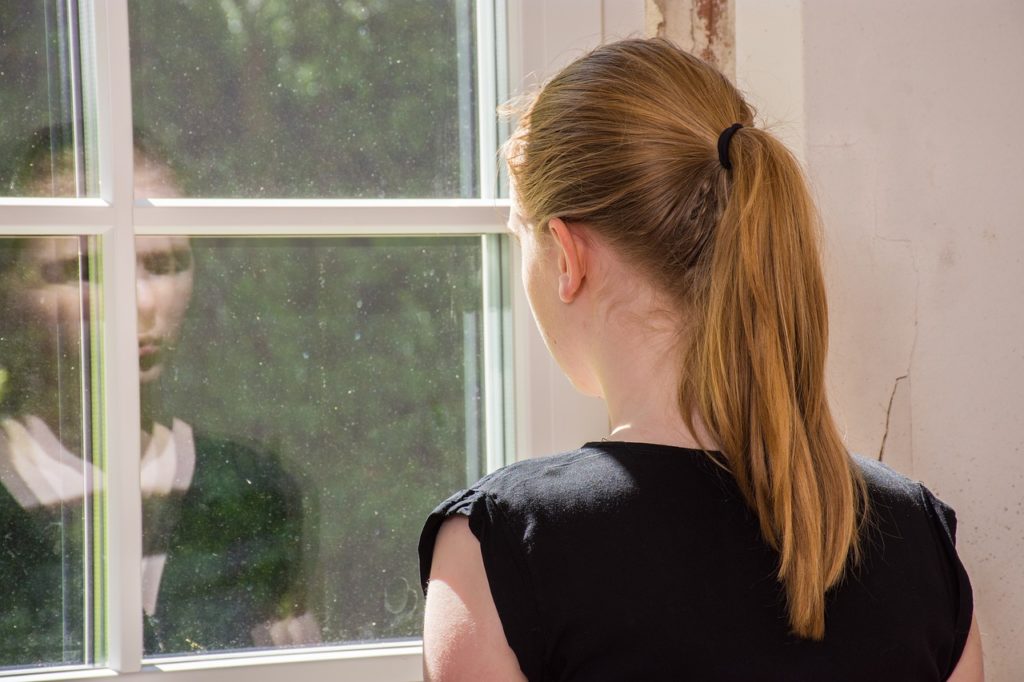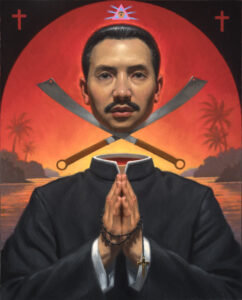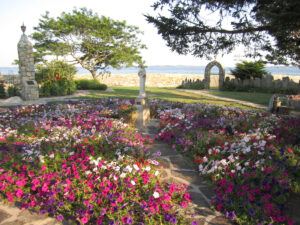The poets depict the Muse as a mistress, not a wife. Plato’s Muse possessed the poets, enslaved and crazed them. Though Dante and Milton attempted to baptize her, the Romantics preferred a primal thralldom to “thou, O awful loveliness.” In Shelley’s “Hymn to Intellectual Beauty,” the Muse is called “Demon, Ghost, and Heaven.” And Robert Graves’ ode to “The White Goddess” begins: “All saints revile her, and all sober men…”
Into the stewpot of recent attempts to answer the question Where are all the Catholic artists? I’d like to toss this suggestion: perhaps the Muse is just a little too naughty for us.
At least, we fear she is. If, in the folly of youth, the Catholic flirted with the Muse, maturing in virtue suggests a taming of the “divine madness” that scandalized even pagan Plato. Moreover, the Christian life is one of sacrifice, demanding that selfish ambitions be burned away in the purifying fire of love.
This sentiment is echoed in Reid McGrath’s poem “The Untrue Artist,” which appeared in First Things last November. The title refers to George Bernard Shaw’s statement that “The true artist will let his wife starve, his children go barefoot, his mother drudge for his living at seventy, sooner than work at anything but his art.” McGrath’s response begins:
I’ve put untapped potential on a shelf
much like a book one someday wants to read.
I’m less concerned with cultivating “Self,”
and now am more concerned with what we need.
We’re married. You’re more beautiful than books.
The Muse is not my mistress anymore…
For nearly my whole adult life, I viewed the Muse as a mistress. I saw art as a private passion having little relevance to my obligations as a Christian. In college, I permitted myself to engage in a love affair with theatre, music, and writing through my academic coursework, but it was clear to me that being a good Catholic meant spending all my free time at campus ministry events; it meant leading bible studies and retreats; it meant that whenever there was a conflict between “generous” religious service and “selfish” creative indulgence, the road to sainthood was paved with my unwritten poems, my unspoken soliloquies, my unsung songs.
Midway through college, I was introduced to the Catholic theology of vocation, especially as presented in St. John Paul II’s Theology of the Body. I was captivated. I wanted to make a total gift of myself, and I wanted to make it more totally than anyone had ever done before. Yet as I tried to imagine handing over my “unique and unrepeatable ‘I’” to another, I became aware of an uncomfortable strain in the deepest part of my soul, which seemed to threaten that, if ignored, it would become an irreparable rift. I felt that I was not actually free to make a total gift of myself, because some vast, obscure territory of my soul had already been claimed. This territory frightened me. It seemed to be the source of all my art, and it seemed to lie at the very core of my being. It did not feel holy; it felt wild.
Much to my relief, I realized that the way nuns talked about their consecrated vocation was exactly the way I felt. Almost exactly. They couldn’t give themselves to a human spouse because they had already been claimed by a Divine Spouse. Who could possibly hold the claim I felt on my soul if not God?
So I joined the convent. The strain didn’t go away. For whatever reason, religious life was not a context in which I was able to access that vast, obscure territory of my soul which was the source of all my art. I told myself it didn’t matter, that art was a purely ornamental part of my identity which could, like my hair, be cut off and veiled. Yet as the rift between my artist self and my nun self grew wider, it became clear that God stood all on the side of art, begging to teach me how to be whole.
I left the convent. But I was convinced that my artistic identity could not be in fundamental conflict with my Christian vocation. I turned again to St. John Paul II, whose Letter to Artists referred to art as a vocation, one in which the artist must “respond to the demands of art and faithfully accept art’s specific dictates.” He spoke of “the obligation not to waste this talent but to develop it, in order to put it at the service of their neighbor and of humanity as a whole.” As if demands, dictates, and obligations weren’t enough, he added, “The particular vocation of individual artists decides the arena in which they serve and points as well to the tasks they must assume, the hard work they must endure and the responsibility they must accept.”
John Paul’s Muse seemed no coy mistress, but a guiding angel with a sword of flame.
As I set about trying to discern the tasks and obligations of my artistic vocation, I learned that it demanded a great deal of interior space. It required disproportionate amounts of solitude. It required some refuge of wild natural beauty where I could go for long walks. It required bouts of sitting motionless on the couch letting my mind reel with the bigness of its own thoughts. Time after time, when asked to teach religious education, serve at a church function, or volunteer for a non-profit, I said no, because this would have prevented me from being faithful to the obligations of my vocation.
The self-absorption in all of this seemed scandelous. I still wanted to make a total gift of myself, but the more I sought the obligations of my artistic vocation, the more they pointed me back to myself. I blushed every time I thought about my friends who were married with children, especially those who were artists. I felt like a character in a satire about writers. I felt like George Bernard Shaw’s description of the True Artist, which no one could have ever mistaken for a description of the True Christian.
In order to probe my vocation more deeply, I took an extended solitude retreat at a cloistered monastery. I brought a whole box of books with me, but I only needed one: Creative Intuition in Art and Poetry, a series of lectures given by Jacques Maritain at the National Gallery of Art in 1953. In these lectures, Maritain provided me with something no other Catholic thinker had been able to give: a concrete language describing the interior structure of the artist and her relation to the world.
In Maritain’s thought, the act of artistic creation comes from a fruitful interpenetration, a perichoresis between Self and Things. His understanding of “Things” resounds with incarnational depth, invoking Thales of Miletus’ line, “All things are full of gods.” As for the “Self,” this term signifies the secret, veiled center of the artist’s subjective individuality, the locus where his various human components are fused in a simple core: “the totality of man, sense, imagination, intellect, love, desire, instinct, blood and spirit together.”
Because the Self is the locus of that spark of preconscious inspiration Maritain calls creative intuition, “the first obligation imposed on the poet is to consent to be brought back to the hidden place, near the center of the soul, where this totality exists.” Maritain emphasizes the importance of this obligation many times, acknowledging that because of it, the artist often can’t function in the world like other people: “…in the poet, contrary to other men (especially those involved in the business of civilized life), the soul remains, as it were, more available to itself, and keeps a reserve of spirituality which is not absorbed by its activity toward the outside…”
It isn’t so much that the poet must always be looking at herself, but that she must have a certain awareness of her own gaze on the world and a ready availability to the still, small voice of creative intuition. In Maritain’s view, the Muse is not, as Plato thought, a divine Other existing in the world of Ideas who seduces the artist in order to speak an ethereal but foreign message; rather, the Muse is creative intuition, arising from the shadowy depths of the Self.
If the Muse was scandalous enough as a mistress, what kind of gross self-absorption is implied by courting one’s own Self? We struggle to see how the artistic vocation, with such self-focused demands, could coexist alongside a Christian vocation, which requires the outpouring of one’s life in self-forgetful love.
I found a clue to this riddle in Maritain’s discussion of art as a virtue. Using the Aristotelian concept of virtue as a habitus or perfection of an ability in man, Maritain speaks of art as a virtue of the practical intellect. Yet he contradistinguishes artistic virtue with moral virtue; being a virtuoso does not make one a saint. Conversely, moral depravity does not prevent perfection in art. Maritain quips, “Oscar Wilde was but a good Thomist when he wrote: ‘The fact of a man being a poisoner is nothing against his prose’.” Because all men are bound to pursue moral virtue, while artistic virtue is only relevant to those with the capacity for it, the two have often had a tenuous relationship. “Art in itself,” says Maritain, “pertains to a sphere separate from, and independent of, the sphere of morality. It breaks into human life and human affairs like a moon prince or a mermaid into a custom office or a congregation; it will always make trouble and arouse suspicion.”
Both Christian and secular thinkers have wrestled with this tension between moral and artistic virtue. Gerard Manley Hopkins, who struggled with the fear that his love for poetry threatened his vocation to the Jesuits, devoted a poem specifically to the relation of art and morality. In “How all is one way wrought,” he affirms that a perfectly crafted work of art still has no moral value:
Therefore this masterhood,
This piece of perfect song,
This fault-not-found-with good,
Is neither right nor wrong.
At the end of the poem, he declares the sovereignty of morality over art, affirming the Christian belief that sanctity is the highest perfection of man:
For good grows wild and wide,
Has shades, is nowhere none;
But right must seek a side
And choose for chieftain one.
In Hopkins’ poem, the artist isn’t asked to sacrifice artistic perfection in the quest for holiness. Yeats, on the other hand, makes morality and art utterly irreconcilable in his poem “The Choice”:
The intellect of man is forced to choose
Perfection of the life, or of the work,
And if it take the second must refuse
A heavenly mansion, raging in the dark.
If Yeats is correct in pitting art against morality, the True Christian must always be the Untrue Artist. But if, as Maritain proposes, art inhabits a sphere distinct from moral virtue yet not in conflict with it, there is room for the Christian to understand art as a God-given vocation.
The aim of every Christian calling is moral perfection—perfection in love. The aim of the artistic calling, on the other hand, is not moral but artistic perfection—perfection in the work created. Just as moral and artistic virtue can coexist in one person without dividing that person, so a person can pursue both a moral vocation and an artistic vocation without compromising either call.
This isn’t to say that the artist won’t experience tension between the separate obligations of love and art. Such tension is part of the artist’s unique struggle. Stephen Sondheim’s musical Sunday in the Park with George portrays this conflict in the fictionalized story of pointillist painter Georges Seurat, who is unable to find a balance between the demands of his relationship with his longtime mistress, Dot, and the demands of “color and light.”
Sondheim’s depiction of Seurat points to an aspect of the artist previously touched on: the artist’s need to deeply inhabit his own subjective solitude. This withdrawing into himself is what Dot laments most in George; she feels shut out of the part of him she most wants to share. The tension is gorgeously expressed as they sing alternating lines in “Color and Light”:
Dot: But how George looks. He could look forever.
George: There’s only color and light.
Dot: As if he sees you and he doesn’t all at once.
George: Purple and white…
Dot: What is he thinking when he looks like that?
George: And red and purple and white.
…
Dot: And you look inside the eyes.
George: The pink lips, the red cheeks…
Dot: And you catch him here and there.
George: The wide eyes. Studying the round face, the tiny pout…
Dot: But he’s never really there.
Ultimately, Dot leaves George, though pregnant with their child. In “Finishing the Hat,” George pours out his grief as he tries to lose himself in his work:
And how you’re always turning back too late
From the grass or the stick
Or the dog or the light,
How the kind of woman willing to wait’s
Not the kind that you want to find waiting
To return you to the night,
Dizzy from the height,
Coming from the hat,
Studying the hat,
Entering the world of the hat,
Reaching through the world of the hat
Like a window,
Back to this one from that.
So much of the complexity, the frustration, the loneliness of the artist would disappear if George could simply invite Dot to reach through that window with him. But he can’t. And he can’t stop retreating into the “world of the hat,” the world of Things; it’s where he learns to see… even to see Dot. This is part of the mystery and the cross of being an artist. It’s part of the mystery and the cross of being the spouse of an artist. And it’s possible that one of the reasons Catholic artists seem scarce is that many Catholics simply can’t reconcile this kind of self-reservation with the ethic of making a total gift of oneself.
I’ve been pondering a theological image that may offer one more clue into this riddle, taken from St. John Paul II’s Theology of the Body. In his reflections on Genesis, John Paul locates the meaning of spousal love in the original unity of Adam and Eve in the Garden, where their reciprocal gift of self led to a perfect, loving communion. This original unity reveals one of the deepest aspects of human identity. But John Paul points out that original unity is not the only image presented by the second account of creation.
Before the “unity of the two”, there was just one man, alone and naked before God.
This is man’s primal experience of himself. John Paul calls this “original solitude”. He asserts that original solitude is ontologically prior to original unity, having significance not just for man as male but for each human person, male and female. Original solitude is the experience of being a Self, “a person endowed with a subjectivity of his own” who fundamentally exists in “a unique, exclusive and unrepeatable relationship with God himself.” Original solitude is also an experience of Things: “Thus formed, man belongs to the visible world; he is a body among bodies.” In this symphony of Self and Things, man becomes a “partner of the Absolute,” an image of God called to participate in the work of the Creator. St. John Paul’s description of original solitude seems closely related to that fecund interiority of the artist which is the source of creative intuition.
John Paul doesn’t view original solitude as a barrier that must be overcome in order to achieve original unity. Rather, he sees this solitude as an ontological precondition for unity. In Sondheim’s musical, George’s tragedy is that he is unable to navigate between creative solitude and intimate unity. But it seems possible that the artist, after withdrawing into the solitary contemplation of Things, could emerge capable of a deeper communion with the Other.
Could being a True Artist teach him to be a True Spouse, a True Christian?
Maritain compares the artist’s experience with mysticism. Mysticism is a human perfection—perhaps the greatest human perfection—yet it isn’t necessary for sainthood. Rooted at the very core of personal subjectivity, mystical experience involves a deep inhabiting of one’s own interiority in order to receive a direct communication of divine love in the secret center of the soul. Mysticism is an utterly gratuitous gift, one that no person can earn. Yet the fact that some human persons are capable of this experience teaches every human about his own dignity. Because there are mystics, each person should feel more in awe of himself.
Artistic experience is also a gratuitous gift, a human perfection not necessary for sainthood, yet teaching every human about her own dignity. Artists teach us that we are made in the image of God the Creator, that we are capable of receiving the Divine Beauty in the secret center of the soul and giving birth to new instantiations of it through the works of our minds and hands. Because there are artists, each person should feel more in awe of herself.
Mary Shaffer is a writer, actress, and web designer in Stillwater, Minnesota, with a B.A. in Fine Arts from St. Olaf College and an M.A. in Theology from the St. Paul Seminary School of Divinity. She writes at mcshaffer.com and designs at inscapewebdesign.com.




